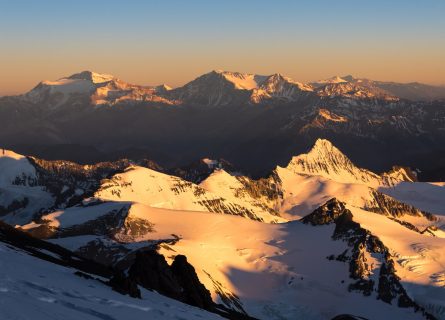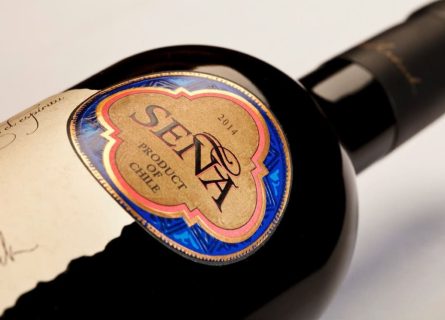Aconcagua Wine Region Guide (original) (raw)
Chile's Scenic Marvel, Crafting Cool Climate Whites and Bold Reds
EXPLORE ALL OUR GUIDES TO CHILE'S WINE REGIONS
Last updated: November 21, 2024
Introduction
Named after the highest peak of the Andes, Chile has few landscapes as majestic as the verdant Aconcagua Valley. First planted to vines in the 19th century, the region was developed by Don Maximiano Errazuriz – a true Chilean pioneer. At the time, naysayers insisted that local conditions were too hot and dry for quality viticulture and that Aconcagua could never rival more established terroirs found within the Central Valley. But they were wrong. Today, some of Chile’s most expensive and prestigious labels are made in Aconcagua, including Seña and Errazuriz Don Maximiano Founder’s Reserve.
Chardonnay and Pinot Noir have also shown great affinity for the soils of northwestern Chile, reaching an apogee in the Casablanca and San Antonio valleys. In truth, few varieties cannot succeed here, not least because Aconcagua is full of passionate and incredibly ambitious winemakers. They bring new meaning to the phrase “_the sky’s the limit._“
Geography and terroir

Mt. Aconcagua at sunrise
Between the towering peaks of Mt. Aconcagua and the beautiful Pacific coastline, this lush valley is home to a sea of vines. Yet wine had a relatively late start here, introduced in the 1800s by Don Maximiano Errazuriz. Today, an expanding acreage is situated 100 kilometers to the northwest of Santiago, encompassing the subregions of Casablanca, San Antonio, and the Aconcagua Valley itself. The nomenclature pays homage to the highest mountain in the Americas, rising to almost 7000 meters above sea level. Intrepid hikers and mountaineers regularly tackle it from across the world!
This is where the Errazuriz family built their impressive estate at Panquehue, right at the heart of the Aconcagua Valley. In the mid-1900s, the critical mass of vineyards were planted inland, located relatively close to the west-facing Andean foothills and shadowing the eponymous river that provides essential meltwater for irrigation. Measuring over 100 kilometers in length, there is no shortage of high potential climats (vineyard sites) in Aconcagua, despite the very warm and dry climate. Yet winds that sweep cool mountain air into the vines and funnel ocean air up from the Pacific coastline somewhat ameliorate the heat of the open valley. Without this meteorological phenomenon and the presence of the Antarctic Humboldt Current, quality-focused viticulture would be impossible here.
Nevertheless, the last 15 years have seen a realignment of viticultural priorities, with many investors now planting at higher altitudes – or closer to the Pacific. One of the most exciting developments is the rise of coastal terroirs, some less than 20 kilometers from the ocean. Indeed, Errazuriz’s talented winemaker, Francisco Baettig, planted a few hectares of Sauvignon Blanc in an experimental vineyard in 2005; there are now over 250 hectares planted in ‘Aconcagua’s Costa,’ producing world-class Pinot Noir, Chardonnay, and Syrah. This expansive climat, less than 15 kilometers from the Pacific, experiences cooling from maritime breezes drifting off the ocean. They are responsible for the crystalline flavors and bright acidity that characterize top Aconcagua Sauvignon Blanc.
However, conditions become increasingly warmer as you move inland – the influence of the sea diminishes considerably as you head towards the center of the valley.
According to Wines of Chile:
“_Here is where the Andes and Central Mountains start separating, and there is room for terraces of vines along the banks of the Aconcagua river – red varieties in the uplands and white varieties, along with Pinot Noir, closer to the mouth of the river. Temperatures here are similar to those found in Chile’s historic wine heartland, the Maipo valley._”
In warmer zones, both Bordeaux and Mediterranean varieties can yield exceptional wine in Aconcagua: cassis-infused Cabernet Sauvignon and suave Grenache. Meanwhile, Syrah performs admirably in the valley, first introduced by Eduardo Chadwick in 1994.
Of course, much will depend on the altitude of a particular vineyard – and the soil type. Climbing to 1000 meters above sea level, vineyards planted on the higher slopes of the foothills will enjoy significant diurnal temperature variation, slowing down the vine’s metabolism as the sun begins to set. However, other sites are located on very low-lying terrain, occasionally as low as 50 meters. Such terroirs are more suited to producing full-bodied red wines, although coastal breezes may help offset low elevation.
There is also a great deal of rocky (slate-schist) material in the valley, transported over centuries via meltwater erosion. These stony topsoils prevent sunlight from evaporating moisture, while alluvial terroirs encourage vines to extend their root systems far underground in search of water, absorbing minerals in the process. Benefiting from intense sunlight and a relatively disease-free environment, Aconcagua is an outstanding place to grow vines.
Winemaking and regional classifications

Seña is a unique Bordeaux-style red blend with a very Chilean soul. Its predominant variety is Cabernet Sauvignon, while Carmenere clearly ties it to Chile.
Aconcagua’s most important USP is its viticultural diversity. Inspired by the work of Don Maximiano Errazuriz, the region’s key stakeholders have long specialized in growing both cool-climate varietals and Mediterranean styles, running the whole gamut from exotically scented Petit Verdot to Burgundian Chardonnay. There is no desire to fixate on one signature grape, not least because a diversified portfolio carries less risk in export markets. This steely Chenin Blanc and voluptuous Marsanne in Aconcagua are grown alongside considerable volumes of Cabernet Sauvignon, Carmenere, Syrah, Pinot Noir, and Sauvignon Blanc, and one can also discover aromatic Riesling. There is much to discover here if you travel with an open mind.
Yet the region does offer some crowd-pleasing wines and ubiquitous styles. Aconcagua Sauvignon Blanc has stolen some of New Zealand’s thunder in the 21st century: it delivers an impressive facsimile of Sancerre with less tropical fruit and Marlborough pungency. Chile provides a more subtle, elegant interpretation of the grape, which is very much in vogue in the wine bars of London and New York.
Today, Errazuriz produces exemplary Sauvignon Blanc – now considered one of Chile’s best unoaked dry whites. Yet, in marked contrast to the traditions of Bordeaux, Chilean winemakers do not generally blend Sauvignon and Semillon; the variety is open to many interpretations, from featherweight wines made in Germany to super-ripe expressions grown in Napa Valley. Taking inspiration from the Loire, Francisco Baettig uses only top-quality handpicked fruit from the company’s Manzanar Vineyard, just 12 km from the Pacific Ocean. After the harvest, 30% of the grapes are whole-bunch-pressed to obtain very pure juice free of phenolics – the remaining 70% are destemmed and crushed. After pressing, these two elements are combined in stainless steel tanks and vinified at low temperatures to maintain fruit and freshness. No oak is used in the fermentation or maturation.
The result is a crisp, attractive, dry white that rarely leans into exoticism. Sauvignon Blanc (like other pungent varieties such as Gewurztraminer) has high levels of flavor compounds: methoxypyrazines and thiols. The former is generally associated with cooler climate styles that are responsible for bell pepper, blackcurrant leaf notes, and the classic gooseberry characteristic. Thiols, however, tend to accumulate as the berries become more ripe – aromas of passion fruit and guava are often detected. Chilean Sauvignon Blanc trades heavily on the former, marketing a very reliable – and very affordable – alternative to the dry whites of Sancerre and Pouilly Fume.
Aconcagua is also famous for its delectable Bordeaux blends. Unveiled in 1997 (first vintage 1995), Seña has the great distinction of being Chile’s seminal icon wine. Francisco Baettig has been making it for over twenty years, during which time he has refined his technique, prioritizing elegance over power.
US critic James Sucking, tasting the 2020 vintage, waxed lyrical about:
“_a full-bodied Seña with juicy fruit chiseling into the tight, extremely fine-grained tannins._”
But this is not merely journalistic hyperbole. Seña truly is one of the world’s most outstanding red wines.
The winemaking is both nuanced and precise. A sophisticated blend of five grapes (Cabernet Sauvignon leads from the center), Seña is vinified in stainless steel and a small percentage of new barrique. The berries are handpicked, sorted, and destemmed (almost universal practice in Cru Classé Bordeaux) before pump-overs are used to extract flavor and color from the grape skins. A fairly long post-fermentation maceration (about a month) extracts good tannin levels from the Cabernet Sauvignon, Merlot, and Carménère; Cabernet Franc and Petit Verdot are subject to much shorter periods. The wines are then aged in 100% new wood for 22 months, invoking the ethos of blue chip Napa Cabernet.
However, Seña is arguably distinct from Screaming Eagle and other Californian archetypes.
To quote leading Spanish expert Luis Gutiérrez:
“_This wine [2020] has intensity and complexity, with no mintiness or herbal notes; it’s spicy and juicy, with energy and depth. It has structure, color, stuffing and acidity to develop nicely in bottle._”
With collectors increasingly expanding their horizons beyond Bordeaux, Seña’s moment should have arrived.
Facts & Figures
Key wine styles
- Full-bodied red and white wines; a growing volume of sparkling
Appellation structure
- DOs Aconcagua Valley, Casablanca Valley, San Antonio Valley, Lo Abarca
Hectares under Vine
- 1,441
Average annual production
- 20 million liters per annum (entire Aconcagua region)
Approximate number of producers
- Six (other wineries based outside of the region source fruit from Aconcagua)
Exclusive Expert Insights
Insight by Mauro von Siebenthal, Founder at Vina von Siebenthal

Mauro Von Siebenthal, Founder
When did you first realize that the Aconcagua Valley had enormous potential for quality wine growing?
One summer day almost 30 years ago, I visited the high part of Aconcagua Valley, the area of San Felipe and Panquehue (as a tourist, I was interested in visiting the old Viña Errazuriz winery founded in 1870).
The area’s intense luminosity and the refreshing breeze from the Pacific, some 50 km away, caught my attention. An incredible combination of sun, dry air, and wind limited the temperature to no more than 27°-29°C, while in other parts of the country, it was around 32°-35°C. The nights are cool all year round, which explains the wines’ remarkable aromatic expression of fruit.
Why do Burgundy varieties perform so strongly in the wider region?
I understood why Aconcagua had been the most important viticultural valley in Chile during the whole of the Colonial period until the end of the 19th century, when intensive vine cultivation spread to the outskirts of Santiago and further south, where there was an abundance of land.
Aconcagua is a transverse valley 170 km long, which begins at nearly 7,000 meters high in the Andes and stretches to the Pacific. The river (which has the same name), the glaciers, and the volcanoes during different periods have all played a part in creating all types of soil (alluvial, colluvial, and sedimentary) of varied compositions (limestone, sandy, granitic, etc.).
To simplify, we can say that in the cooler coastal areas, Pinot Noir, Chardonnay, and Sauvignon Blanc all attain a notable elegance in a New Zealand “style.”
In the high part of the valley, closer to the Andes mountains, the Bordeaux varieties such as Petit Verdot, Cabernet Sauvignon, and obviously Carmenere attain an extraordinary ripeness of tannins (remember the effects of luminosity on the grape skins). The result produces wines that are remarkably mouth-filling, creamy with great aromatic concentration like those we can find in the Grand Crus of Bordeaux (I would say, Margaux, Pauillac, and Pessac-Leognan) or in the super Tuscans.
The long autumns without rain are key to obtaining the required phenolic maturity, especially for Carmenere, which in the area attains a superb balance.
Do you think the style of Chilean Pinot Noir has evolved since the 1990s?
The surface planted with Pinot Noir in Chile during the period 1990-2024 has increased 40 times (from 100 up to 4,000 hectares)! This phenomenon coincides with exploring coastal terroirs (Casablanca, San Antonio, Leyda, Aconcagua Coast, Limari, etc.). The Pinots from these regions are “fresher, “more “drinkable “and very aromatic, and both Chilean and international consumers have well received them.
What other grape varieties are currently flying under the radar?
We have discovered that Aconcagua can produce world-class Syrah and Viognier, always from the high part of the valley. I would like to explore the possibilities for Malbec in the same high area (a star in Mendoza on the other side of the Andes at the same latitude). I am convinced that we have the right conditions to produce a very elegant Malbec.
Key Grape Varietals
Chardonnay is a green-skinned grape varietal native to the Burgundy wine region in France and one of the most popular varieties worldwide.
Find out more
Muscat blanc is a white wine grape varietal popular in the Muscat d'Alsace, Moscato d'Asti and Beaumes-de-Venise regions.
Find out more
Pinot Gris is a white-wine grape variety originally from Burgundy. It is thought to be a mutant clone of Pinot Noir.
Find out more
The sauvignon blanc grape varietal, originally from the Bordeaux region of France, is now one of the world's most loved white varieties.
Find out more
Sauvignon Gris
Sauvignon Gris is a pink-berried mutation of Sauvignon Blanc, originally likely from Bordeaux but now also prominent in Chile. It is a relatively obscure grape, making up only 2% of Bordeaux's white wine grape production. Nearly extinct due to the phylloxera epidemic, its revival is credited to Jacky Preys, a winemaker from the Loire Valley.
Explore the allure of the Semillon grape & its legendary connection to Sauternes. Unveil the history & flavors of this captivating varietal. Cheers!
Find out more
Discover Riesling's charm, a white grape from Germany's Rhine region, cherished in Alsace, France. Unveil its secrets and delights
Find out more
Viognier comes from the northern Rhône valley AOC of Condrieu and is where its most famous white wines are produced.
Find out more
Discover the irresistible allure of Cabernet Sauvignon—a worldwide favorite with robust, dark-bodied flavor. Unleash your wine journey today!
Find out more
Cabernet Franc grape is a close relative of Merlot and Cabernet Sauvignon and is the principal blending grape used in Bordeaux.
Find out more
Carménère
Carménère is a red wine grape from Bordeaux, France, once used for blending but is now mostly grown in Chile. Named for its crimson leaves in autumn, it's part of the Cabernet family and was one of Bordeaux's original six red grapes. Although rare in France today, Chile leads with the largest Carménère vineyards, exploring its blending potential, notably with Cabernet Sauvignon. The grape is also cultivated in Italy, Argentina, and parts of the United States.
Merlot is the most cultivated grape in Bordeaux and closely related to Cabernet Franc
Find out more
Delve into Malbec, a dark, small grape native to France, cherished for its thick skin and exceptional flavors. 🍇🍷
Find out more
Pinot noir is a light-bodied red wine varietal closely related to the Vitis vinifera grape and produces the most sought-after red wines in the world.
Find out more
Syrah is dark-skinned and perhaps the most underrated of the 'noble' red grape varieties.
Find out more
Aconcagua gastronomy
In tandem with Mendoza, many of Aconcagua’s best restaurants are found in leading wineries and hotel resorts. Harnessing raw talent from across South America, top chefs use local ingredients to craft menus that offer a welcome departure from traditional Chilean fare.
Sophisticated flavors and seasonality are typically the name of the game: prawn risottos, grilled Pacific Snapper, braised pork, and Pierna de Cordero mecha (oven-roasted leg of lamb, marinated in garlic, red wine vinegar, oregano, and diced porcini mushrooms). Yes, it is as delicious as it sounds.
Wineries Recommended by Cellar Tours
Casa Marin, led by Maria Luz Marin in Chile's San Antonio Valley, excels in cool-climate wines like Pinot Noir, winning 'Winery of the Year' accolades. Read more
Von Siebenthal, a Swiss-owned Chilean winery in Panquehue, excels in top-quality reds with a boutique approach, led by passionate owner Mauro. Read more
Author

With a passion for food & drink that verges on the obsessive, wine writer James Lawrence has traveled the world in search of the perfect tipple. To date, nothing has surpassed the 1952 R. Lopez de Heredia Vina Tondonia Rioja Reserva, tasted in the cobweb-filled cellars with owner María José. Meanwhile, James has been writing for a wide variety of publications for over 12 years, including Telegraph, Decanter, Harpers, The Drinks Business, and Wine Business International. He lives in South Wales and returns to his former university city, Bilbao, as much as possible.
Further Reading: Discover More Related Blog Content
More information
If you would like us to customize an exclusive luxury tour, contact us and let us know your travel plans. We offer luxury food and wine tours for private groups of a mininium two guests. In addition, all of our private, chauffeured tours are available year-round upon request.
